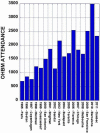Functional MRI: A confluence of fortunate circumstances
- PMID: 22342876
- PMCID: PMC8771460
- DOI: 10.1016/j.neuroimage.2012.01.130
Functional MRI: A confluence of fortunate circumstances
Abstract
Functional MRI has existed for about twenty years and by almost all measures has been incredibly successful. What are the reasons behind this success? In this review, eight extremely fortunate circumstances came together to produce BOLD based fMRI as we know it today. They are as follows: 1. The MRI signal, 2. The MRI relaxation rates, 3. The oxygen-dependent magnetic susceptibility of blood, 4. Neuronal-hemodynamic coupling, 5. The spatial scale of brain activation, 6. The prevalence of scanners able to perform echo planar imaging (EPI), 7. The parallel development of computing power, and 8. The very large group of neuroscientists who, pre-1991, were perfectly poised, willing, and able to exploit the capability of fMRI. These circumstances are discussed in detail. The desired goal of this review is primarily to convey the field of fMRI from the perspective of what was critically important before, during and after its inception and how things might have been if these circumstances would have been different. While there are many instances where circumstances could have been better, it is clear that they worked out extremely well, as the field of fMRI, a major aspect of functional neuroimaging today, is thriving.
Published by Elsevier Inc.
Figures







References
-
- Aguirre GK, Detre JA, Zarahn E, Alsop DC. Experimental design and the relative sensitivity of BOLD and perfusion fMRI. NeuroImage. 2002;15:488–500. - PubMed
-
- Bandettini P. Functional MRI today. International Journal of Psychophysiology. 2007;63:138–145. - PubMed
-
- Bandettini PA. The temporal resolution of Functional MRI. In: Moonen C, Bandettini P, editors. Functional MRI. Springer; Verlag: 1999. pp. 205–220.
Grants and funding
LinkOut - more resources
Full Text Sources

